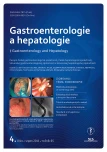Training in endoscopic methods using a pig ex-vivo simulator – assessment by participants
Authors:
J. Martínek 1; S. Suchánek 1; F. Závada 1; M. Stefanová 1; A. Štrosová 1; B. Svobodová 2; M. Zavoral 1
Authors‘ workplace:
Interní klinika, 1. LF UK a ÚVN Praha2Klinika nefrologie, 1. LF UK a VFN v Praze
1
Published in:
Gastroent Hepatol 2011; 65(4): 189-194
Category:
Endoscopy: Original Article
Overview
Introduction and aim:
Animal ex-vivo simulators are increasingly being used for training in basic as well as advanced endoscopic procedures. The aim of the study was to analyze the participants’ assessment of the course.
Methods:
A questionnaire--based study. All participants involved in the following courses: hemostasis, perforation closure, endoscopic resection and polypectomy, endoscopic dissection, esophageal stenting and the use of OVESCO clips filled in a questionnaire. The participants answered questions concerning the benefit and quality of these courses using a visual analogue scale (from 0 = the worse to 100 = the best).
Results:
In total, 129 subjects-doctors participated in 32 courses. The great majority of them assessed the participation as beneficial (mean ± SD: 99.5 ± 1.5) and thought that the course improved their endoscopic skills (91.2 ± 13). The majority of participants also agreed that such courses should be compulsory in gastroenterological credentials (88.4 ± 18). The participants similarly evaluated all the above-mentioned course types.
Conclusion:
The great majority of participants assess hands-on training courses involving animal ex-vivo simulators as beneficial, improving their endoscopic skills. The majority of participants also agreed that such courses should be compulsory in gastroenterological credentials.
Key words:
hemostasis – perforation – dissection – Erlangen model – training
Sources
1. Hochberger J, Euler K, Naegel A et al. The compact Erlangen active simulator for enterventional endoscopy: A prospective comparison in structured team-training courses on endoscopic hemostasis for doctors and nurses to the “Endo-Trainer” model. Scand J Gastroenterol 2004; 39(9): 895–902.
2. Hochberger J, Maiss J. Currently available simulators: ex vivo models. Gastrointest Endosc Clin N Am 2006; 16(3): 435–449.
3. Hochberger J, Matthes K, Maiss J et al. Training with the compactEASIE biologic simulator significantly improves hemostatic skill of gastroenterology fellows: a randomized controlled comparison with clinical endoscopy training alone. Gastrointest Endosc 2005; 61(2): 204–215.
4. Maiss J, Prat F, Wiesnet J et al. The complementary Erlangen active simulator for interventional endoscopy is superior to solely clinical education in endoscopic hemostasis. The French training project: a prospective trial. Eur J Gastroenterol Hepatol 2006; 18(11): 1217–1225.
5. Maiss J, Wiesnet J, Proeschel A et al. Objective benefit of a 1-day training course in endoscopic hemostasis using the “compact--EASIE” endoscopy simulator. Endoscopy 2005; 37(6): 552–558.
6. Martínek J, Suchánek S, Stefanová M et al. Training on Ex-vivo Animal Model Improves the Endoscopic Skills: A Randomized, Single-blind Study. Gastrointest Endosc 2011; 74(2): 367–373.
7. Parra-Blanco A, Arnau MR, Nikolas-Perez D et al. Endoscopic submucosal dissection training with pig models in a Western country. World J Gastroenterol 2010; 16(23): 2895–2900.
8. Berr F, Ponchon T, Neureiter D et al. Experimental endoscopic submucosal dissection training in a porcine model: learning experience of skilled western endoscopists. Digestive Endoscopy 2011, 23: No. Doi: 10.1111/J.1443-1661.
Labels
Paediatric gastroenterology Gastroenterology and hepatology SurgeryArticle was published in
Gastroenterology and Hepatology

2011 Issue 4
- Metamizole vs. Tramadol in Postoperative Analgesia
- Current Insights into the Antispasmodic and Analgesic Effects of Metamizole on the Gastrointestinal Tract
- Spasmolytic Effect of Metamizole
- Metamizole at a Glance and in Practice – Effective Non-Opioid Analgesic for All Ages
- The Importance of Limosilactobacillus reuteri in Administration to Diabetics with Gingivitis
Most read in this issue
- Standard of the Czech Society of Gastroenterology for capsule endoscopy of the small intestine
- Autoimmune pancreatitis in a patient with Crohn’s disease
- What to do when invasive colorectal carcinoma is found in endoscopic resection specimens?
- Single-balloon enteroscopy in patients with Crohn’s disease – single centre’s experience
